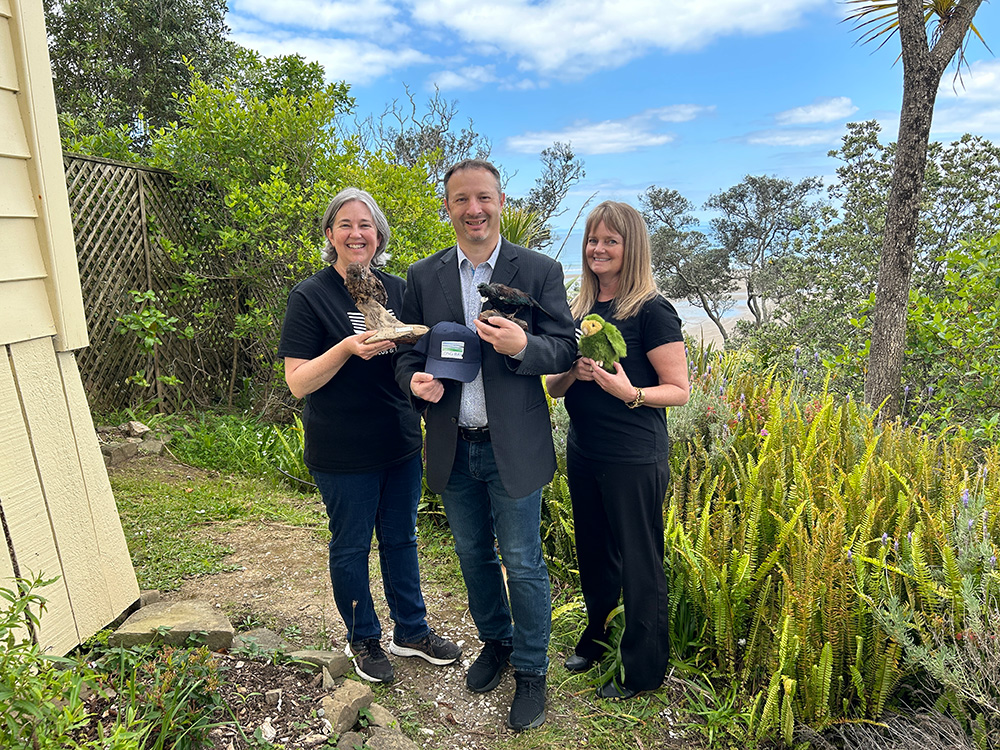With the cost of living at its highest rate for decades, making the most of the whole grocery shop has never been more important, for ourselves and the planet
Every year, Kiwis throw away $2.4 billion worth of food. Most of this goes to landfill, meaning that not only is the food going to waste, it’s also contributing to greenhouse gas and climate change.
Despite millennials’ and Gen Z’s concerns for the planet, a 2021 KANTAR survey of more than 1,500 Kiwis revealed that younger generations throw away a significantly higher proportion of their household food than older Kiwis. The research showed Gen Z toss out 49 per cent of the food they buy and Gen Y (millennials) 50 per cent. In comparison, Gen X discard 40 per cent and baby boomers 34 per cent. Moreover, fruit and vegetables (mostly unopened or uneaten) account for nearly two-thirds of all that food waste.
For more than three decades, United Fresh, whose members include growers, seed producers, and importers/exporters, has been working towards “creating a sustainable fresh fruit and vegetable industry for New Zealand”. Jerry Prendergast is the organisation’s president. He believes we need to do more to manage our fresh produce more effectively. “Eating a diet high in locally-grown, in-season fruit and vegetables is one of the best choices we can make for the health of ourselves and the health of the planet. We just need to make some adjustments to the way in which we buy, store, and use that fresh produce,” he says.
“When we waste food, we also waste all the energy and resources it takes to grow, harvest, transport, and pack it. Food that is thrown into landfill then produces methane, a greenhouse gas even more damaging than carbon dioxide,” Mr Prendergast continues.
“Reducing food waste has been ranked as the third-best global solution to climate change. That’s a massive and relatively simple thing that each of us could be doing every day to reduce emissions.”
Imperfect is the new perfect. Ugly is the new tasty.
Coupled with the amount of food consumers throw out, a staggering 45 per cent of fresh produce never leaves the farm and goes straight into compost or, worse, landfill. This shocking statistic has nothing to do with the fruit and veges not being tasty; it’s purely because this perfectly edible produce is deemed not so pretty, too big or too small compared to other so-called perfect counterparts in the supermarket.
Perfectly Imperfect is an Auckland-based social enterprise widely praised on social media, including by Bays Works In Progress. The non-profit believes “there is no such thing as perfect food, only tasty food. Our goal is to save the 122,000 tonnes of food going to waste each year in NZ by bringing new value to these ‘ugly’ goodies”.
As of July 2022, the Perfectly Imperfect community had rescued more than 280,000 kilos of perfectly good food and used it to prepare more than 1.17 million meals.
Perfectly Imperfect’s Mystery Boxes allow consumers to enjoy some of this rescued food while also supporting initiatives to get this food to those that really need it. It’s also a way of supporting local growers, as the organisation accepts “any edible products, whether they are misshapen, discoloured, too big, too small, or simply lovable weirdos that the mainstream market has rejected.”
To find out more about Perfectly Imperfect and see how you could benefit from or contribute to its community’s goals, visit perfectlyimperfect.org.nz
Cheaper cuts of meat are perfect for comforting winter food
It doesn’t always have to be eye fillet or chicken breasts. Your friendly butcher will be only too happy to share ideas for using cheaper, sometimes overlooked, meat cuts. Shan Moulder of The Meat Room is keen to stress that less expensive doesn’t have to mean less quality – it’s just that these cuts of meat need a bit more time and love. “Lamb shoulder is a great example,” he says. “A joint this size can probably feed six people, and it’s not complicated. You don’t need a smoker. Just pop it in the oven at 150ºC for three hours with some onions, garlic, seasoning and a drizzle of oil. Then take it out, wrap it in foil and cook for another three hours. The meat will be beautifully tender, and the bone will pull right out.” Shan adds that team member Q is always keen to share his beef brisket Thai red curry recipe too!
Hints and tips to help make the most of everything in your trolley
Love Food Hate Waste has an abundance of recipe ideas for leftovers and items you might usually throw away (e.g., broccoli stalks and bread crusts).
There’s also advice on storage to keep produce good to eat for longer, and commonsense advice about how to plan meals and shopping trips, such as:
- Don’t try to plan two weeks’ worth of meals in one go. Instead, shop in-season produce, little and often. That way, you should reduce waste and ensure your groceries are fresh.
- Write a list. If you notice you’re running out of something, jot this down on a bit of paper or your phone so things aren’t overlooked.
- Carefully consider before you bulk buy perishable items. Multi-buys might look like a good deal – but only if you use everything.
- Plan to have a freezer night every so often, when you use up leftovers with frozen items.
For more inspiration and ideas, go to lovefoodhatewaste.co.nz
And just one final suggestion from your editor (and author of this article), whatever you do, never ever go shopping when you’re hungry!
Recipe recommendation from The Meat Room
Alison Gofton’s Tomato Soup Baked Lamb Shanks
Slow-cooked lamb shanks with a breadcrumb topping
Find this recipe at recipes.co.nz/recipes/tomato-soup-baked-lamb-shanks
“Serve the shanks as they come, straight out of the slow cooker, or jazz up this family favourite by serving the shank meat under an easy savoury bread and cheese crumble.”
Serves 4-6 | Prep time 15 mins | Cook time 6 hours slow cooker or 2 hours conventional
INGREDIENTS
6 lamb shanks
2 x 37g packets tomato soup
2 cups beef stock
2 onions, sliced
2 carrots, chopped
1 tsp fresh rosemary, finely chopped
Savoury crumble (optional)
2 cups breadcrumbs
50g butter, melted
1 cup Parmesan, grated
1 tsp fresh rosemary, finely chopped
METHOD
Turn the slow cooker to low to pre-warm while preparing the ingredients.
Mix together the soup powder and stock, stirring until the soup powder has completely dissolved – a whisk is ideal.
If wishing to brown the lamb, heat a dash of oil in a frying-pan and, when hot, brown the shanks well.
Put the lamb, onions and carrots into the pre-warmed cooker. Pour over the beef stock mixture and scatter over the rosemary. Season well with pepper and cover with the lid. Cook on low for 6–7 hours or on high for 4–5 hours, or until the meat is meltingly tender and falling off the bone.
Alternatively, cook, covered in an ovenproof casserole dish, in a pre-heated 160ºC oven for two hours till the meat is tender.
Serve with plenty of mashed potato and seasonal vegetables.
To make the crumble
Preheat the oven to 200°C. Pull the meat from the lamb shanks and discard the bones. Pull or cut the meat into bite-sized pieces and return to the sauce. Transfer the lamb mixture to an 8-9 cup capacity casserole dish.
Mix together the breadcrumbs, butter, cheese and rosemary and scatter over the lamb mixture. Bake in the preheated oven for 20-25 minutes until the casserole is hot and the crumble lightly golden.






